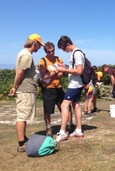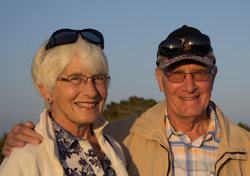Seabird Stories
Please let us know your experiences of the islands and their seabirds. Email info@ios-seabirds.org.uk
--------------------------------------------------------------------------
A View From a Local Business
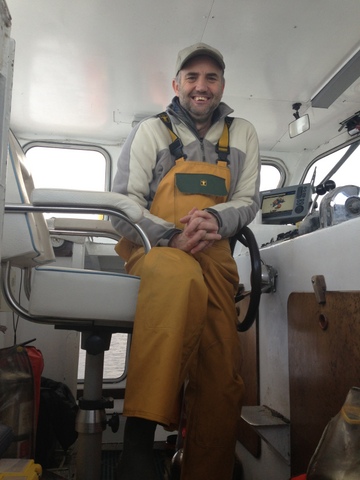
"The project will have huge benefits for the islands of St Agnes and Gugh. We value our seabirds greatly, I provide tours to the Western rocks for visitors to see our seabirds so this project will ensure colonies of seabirds for future generations." - John Peacock, St Agnes Boating
----------------------------------------------------------------------
A View From a Local Farmer

"At Troytown farm we run a diary, icecream business and a campsite. Our campers come here to enjoy the natural environment and the seabirds, particuarly the Manx shearwaters which call at night from Annet. The rats have been destructive over the years, so the project will certainly benefit all our operations here and we know our campers will enjoy the island being 'rat-free'." - Sam Hicks, Troytown Farm
www.troytown.co.uk
--------------------------------------------------------------------
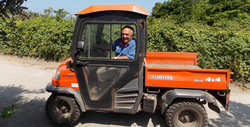 A View From the Community
A View From the Community
“This exciting work has wonderful potential for our wildlife, as well as long-term benefits for the community and local farms. We are keen to share our experiences with the many visitors who come to these idyllic islands.” - Francis Hicks, Lowertown Farm, St Agnes
---------------------------------------------------------------------
A view from sabbatical volunteer Debra Royal - Sharing the wonders of the Isles of Scilly sea-life
Nikki Banfield (Isles of Scilly Wildlife Trust)
John Peacock (Partner, St Agnes Boating)
"What better way to help people appreciate the wonders of their natural environment and the threat it faces than to take them up close and show them birds, mammals, plants and more in their everyday habitat. The Isles of Scilly Wildlife Trust (IOSWT), working within the multi-partnered Isles of Scilly Seabird Recovery Project (IOSSRP), does this as part of its outreach and education work and last week, I jumped on board one of its weekly sea-life safari boat trips from St Agnes out to the Western Rocks and the closed island of Annet.
We boarded the Spirit of St Agnes which, in between scheduled crossings to and from some of the other islands, works with the IOSWT and IOSSRP to take people to witness the marvellous sea-life in this part of the archipelago. What a great example of local people and environmental charity organisations working together to showcase nature in their immediate surroundingsJ
Before setting off, it was good to hear John – the Spirit’s captain and proprietor and IOSSRP Seabird Heritage Volunteer - talk about the St Agnes and Gugh’s community involvement with the Seabird Recovery project. He explained how many individuals’ hard work has helped rid the islands of any rats with the setting and monitoring of more than 100 monitoring stations around the islands as part of a co-ordinated plan by the project to help safeguard the future of worryingly-fast-declining seabird species such as Manx shearwater and storm petrel. It was impressive to hear that these two islands have now been officially declared rat-free! However, he reminded day trippers to call the hotline number (details of which are posted around the islands), in the unlikely event of needing to report any sightings of rats during their visit. By all accounts, the people of St Agnes and Gugh are keen to hold on to their recently-gained and hard-won status as a rat-free zone and are determined to help safeguard their sea-life heritage for future generations to enjoy.
As we set off on our safari, Nikki, our IOSWT guide, highlighted how special the Isles of Scilly are for marine and terrestrial conservation. Located just 28 miles west of the mainland, this area has many conservation designations, given its importance for breeding seabirds and other marine life. There are 26 Sites of Special Scientific Interest (SSSIs), with some of the islands designated as being within a Special Protection Area (SPA), Special Area of Conservation (SAC), laying in or near a Marine Conservation Zone (MCZ) or having an international Ramsar designation for wetland habitat. The whole of the Isles comes under an Area of Outstanding Natural Beauty (AONB) designation. All good-to-know facts to help appreciate the importance of this area for breeding seabirds and other species.
As the trip proceeded, we received a running commentary on the seabirds and other species encountered, with facts and details about their breeding, migration and feeding habits. For instance, we learned that there are more than 10 sorts of ‘gulls’ present on the islands and who knew that the beautiful gliding gannets we spied can have a wing span of some six feet?! Apparently, in order to protect their internal organs whilst diving at high speeds, gannets also have internal ‘air bags’! Nature has so much to teach us, often leading the way for industry and technology to follow.
In the sea, we marvelled at a small group of dolphins and an astute eye spotted a resting sunfish whose top fin had breached the waters surface in order to soak up the sun. These unusual-looking fish can grow up to 4 metres and, like turtles, enjoy a jellyfish or two as a staple in their diet. Whilst they are usually found in warmer waters, you can be lucky to spot them in and around the Isles of Scilly.
When we reached the most westerly extreme of our trip at the Western Rocks, several Atlantic grey seals we encountered there showed as much interest in us as we did in them! We saw more at Annet Island, another IOSWT-managed site which is closed to the public all year round given its importance for breeding seals in the Winter and to breeding birds in Spring and Summer, providing good burrow habitat favoured and required by the likes of manx shearwater and puffin. Such is the importance of Annet to breeding seabirds that it is one of the designated Sites of Special Scientific Interest within the wider Special Protection Area.
Whilst the breeding season for birds has now come to an end with adult Manx shearwaters, for example, having set off on their mammoth migration back to South America and their chicks soon to follow, seals are now preparing to produce their young. We learned that a female seal can live up to the age of forty and during her breeding life, can produce one pup per year. Born at an average weight of 14kgs, pups need to put on the equivalent of half their body weight, every other day, a fact I personally would not have known would be interesting to hear, if I hadn’t had a personal encounter with these seals, via a showing-people-nature excursion, such as this one.
A few waves later, we returned to the quay at St Agnes, non the worse for wear but certainly more enriched by the experience of learning more about the Scillonian sea-life and meeting and witnessing some of it for ourselves. It was also pleasing to note that some of the proceeds from the cost of joining this trip were being donated to the Isles of Scilly Wildlife Trust to help with the ongoing legacy work of the Isles of Scilly Seabirds Recover Project which finishes its remit at the end of September, when funding expires.
I would recommend such a trip to anyone and indeed, any other opportunity to go out and see nature in person, for yourself; to learn a thing of two about what you see around you in the natural environment and hopefully, come away wanting to protect it all the more.
Species such as the Manx shearwater - whose breeding territory in the UK is limited to a very few places, the Isles of Scilly among them – will thank you for it. What’s more, you and your grandchildren will be thrilled to be able to continue witnessing them doing what they do, in the wild, in their natural environment, well into the future."
Debra Royal, RSPB
--------------------------------------------------------------------------------------------------------------------
A view from fundraiser Pam Davis
"I am thankful for the immense privilege of being able to volunteer with the seabird recovery project and the RSPB. The value of the project--removing invasives so that our iconic seabirds can reclaim their homes and knowing that we 'solved' a conservation problem is evident -- the birds are returning. Humans are benefitting as well. Two aspects hearten me the most: Communities resilient,working together to overcome a threat to their island life and knowing that there will be storm petrels and Manx shearwaters whose calls will provide music and whose presence will fill the skies.How poor we would be without them."
Pam Davis, Head of High Value Fundraising RSPB
A View from summer volunteers
Volunteers Hazel and Adam volunteered for the project summer 2016 after graduating from the University of Exeter having studied Biology.
“Everybody on the project was very welcoming and more than willing to show us the ropes as well as helping us set up a timetable that would work around our paid work on Tresco. We thoroughly enjoyed our time with the RSPB and have come out of our volunteering experience with new skills, ranging from practical skills such as vegetation and habitat surveys to improved confidence in engaging members of the public in conversation thanks to the week we spent assisting on the “Date with nature” walks around the Abbey Gardens on Tresco. We thank the guidance from Lyndon, Paul and Jaclyn in bird identification. The highlight of our experience was seeing Manx shearwater chicks first hand. Being able to see the results of the project that we had been helping was a great way to end our volunteering experience and we look forward to working with the RSPB again in the future.”
Adam Falconer and Hazel Reading

View from Volunteer Scillionian III Ferry Wildlife Guides
Dave Conway tells us about the past 8 months volunteering for the project.
"In 2013, I accompanied David Curtis, a long standing Scillonian III Wildlife Guide Volunteer, on his July trip as his regular partner was unable to join him. My main interest was to study the Scillonian subspecies, cassiteridum, Meadow Brown butterfly and I was well rewarded with over 50 individuals on St Marys. I retired in 2002 and now had more available free time, so I became a willing recruit to the RSPB team and have since completed 15 voyages as a Wildlife Guide.
Each voyage is different in respect of weather, wildlife encountered, number and type of passenger, and the wide spectrum of wildlife related questions posed. All seem appreciative of the wildlife seen especially close views of Harbour Porpoise, Common Dolphin with calves, spectacular diving Gannet, skeins of Manx Shearwater, tripping Storm Petrel, painted Puffin, exotic Great Shearwater and Sabine’s Gull as well as other shearwaters, auks, gulls and surprising passerines hitching a ride. Most passengers are sympathetic to the plight of our rapidly diminishing species and are pleased to hear about positive programmes that help to redress the balance such as the rat removal scheme with the resultant increase in fledgling Manx Shearwater and Storm Petrel chicks.
My personal highlight came on 27th June 2014 when I alerted passengers to the possibility of a Leather-backed Turtle as one had been seen recently in Mounts Bay and off Lands End. Typically none of us saw anything resembling a Leather-backed Turtle but as I was having my lunch at Watermill Cove at 1414 a very large Leather-backed Turtle surfaced and swam towards me for the next 4 minutes, before diving – never to be seen again!
After 30 years as a science teacher I find it most rewarding to continue to encourage people to think about their environment and realise that they are capable of making a difference for the better. I always look forward to the next trip as anything could turn up and I also get the opportunity to eat the 'best fish and chips in Cornwall' when I disembark in Penzance."
Dave Conway
"Across the two seasons I have volunteered both seasons were totally different. One unforgettable return journey last year was on a mirror-flat calm sea, when the merest tip of a Harbour Porpoise fin or the lazy flapping of an Ocean Sunfish fin were easy to point out to the deck passengers. In contrast, on one trip this year, in a strengthening northerly swell, I found myself throwing “surf-dude” moves simply to keep vaguely vertical on the rolling deck. On a similar trip several groups of Common Dolphins came very close to the boat, those on deck were so excited that a cheer went up every time a dolphin broke the surface.
The people that I spoke to on the trips were as diverse as the weather. We always tried to bring the IOS Seabird Project into longer conversations, people were impressed and pleased by the progress being made, some mentioned being involved in similar projects elsewhere.
Most of the people I met really did think that birds are brilliant and readily agreed that the organisations protecting them are pretty brilliant too.
Phil Clarke
------------------------------------------------------------------------------------
A view from the Republic of Moldova
Irina Mereniuc from Republic of Moldova volunteered for the project in 2015 whilst working on St Mary's
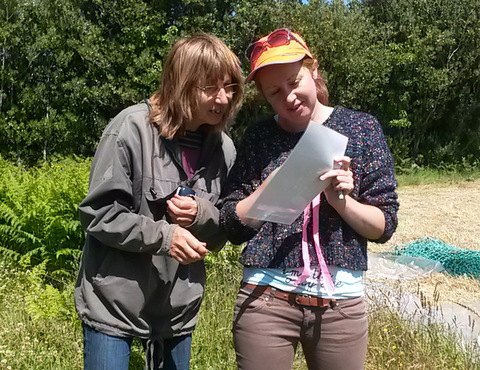
"Saying that volunteering for the project was a life changing experience would be to underestimate it. My volunteering with IOSSRP, for the past half a year, was a soul elevating learning opportunity throughout. The desire to join a (wild)life conservation project brought me to Scilly, this and its paradise- like location and now, at the end of my stay here, I cannot be more grateful for what I learnt on these isles.
My journey with IOSSRP was about gaining faith in my dream of becoming an environmental teacher. It was about witnessing people working hard for a cause they relate to. It was about having an awesome manager who both leads and cheerleads IOSSRP to perfect performance. It was about having my soul smile when I saw a trio of Great Black-Backed Gull chicks playing on St Agnes or when a fluffy Manx Shearwater chick on Gugh (there only because IOSSRP successfully keeps the island rat free) tried to climb on my foot. It was about learning about wildlife and nature conservation in UK and abroad. It was about realising that children do enjoy listening when I tell them about nature and that tourists would invest their holiday time in volunteering for a conservation project, if given the chance. It was about bonding with amazing people, of different life backgrounds, but with this one passion that sings to my heart: nature conservation.
I take with me all the memories I made, the inspiration that filled by heart, the lessons learnt and I will build upon them. For now, I feel blessed for finally gathering the nerve to focus professionally on what my soul longs for. And so I move on, honoured to have been a volunteer within IOSSRP, further guided by the fact that each action, no matter how small one might perceive it, counts when it comes to giving nature (back) a home."
--------------------------------------------------------------------------------------------------
A view from a RSPB member of staff volunteering their time whilst on holiday on Scilly!
Over the past few years I’ve visited the Isles on several occasions, and been captivated by the amazing birdlife. I was therefore thrilled to be given the opportunity to visit the staff, discover more about the Project, and gain some valuable ‘hands on’ experience.
After a friendly welcome from Lydia and Holly, they introduced me to the Project. They explained that my job for the afternoon would be to assist with the analysis of pitfall traps from Bryher. The ecology of St.Agnes is being examined to look at how it has changed, post rat removal. As Bryher is similar in terms of habitat to St. Agnes, it provides a useful ‘control’ in the study eg in one sample analysis of sandhoppers, there were less than 500 sandhoppers on Brhyer whereas on St. Agnes there were approximately 2000.
My task involved counting and sorting the contents of traps from the heathland habitat of Bryher. This was a new experience for me, but under the expert tuition of Lydia and Holly I soon understood what to do, using tweezers to pick out individual specimens from the preserved contents, and meticulously place them on a grid. As I concentrated on the task, I became completely absorbed in the process, and found some exciting bugs such as a species of parasitic (ichneumonid) wasp: the females have a very long ovipositor which they use to lay eggs inside or on their invertebrate host, such as a caterpillar, and then proceed to eat it alive!!
It was a great way to spend an afternoon: I developed my ID skills, enjoyed meeting with Lydia and Holly and sharing their knowledge, and felt good about making a small contribution to this amazing Project.
Sue Habgood
27.5.16
A view from RSPB member of staff Nick Tomalin volunteering for the project summer 2015
"I’ve been lucky enough to visit the Isles of Scilly each autumn for the last nine years with the RSPB. Having seen nearly a decade pass in a snapshot of the islands, I’ve seen many changes - even the ‘School Boat’ kids have turned into teenagers.
But in just three years, the biggest change has occurred on St Agnes and Gugh. The Isles of Scilly Seabird Recovery Project has sprung up, and the rats were removed from St Agnes and Gugh. And now the seabirds are producing young. I know how much hard work has gone into the project, from project staff, volunteers, and supporters – especially the local community. But as someone who spends only one week here each year, it feels like it has all occurred in the blink of an eye.
This September I was lucky enough to spend a night searching for Manx shearwater chicks with Jaclyn and Vickie, right at the point that most of them are fledging. We found four, taking the recorded total to 28. It’s hard to imagine these little birds – so helpless when I saw them – will now be masters of the waves and open ocean. Having spent many a clear evening strolling back from the Fraggle Rock gazing upwards at the vastness of our universe, I can’t begin to comprehend how nature has allowed, even conditioned, these birds to use the stars to navigate themselves back to the islands in a few years.
It’s a story that I had the pleasure to repeat as part of the ‘Date with Nature’ team leading guided walks on Tresco for the rest of the week. We talk about, and hopefully spot, some of the nature that might be encountered around the islands. But to be able to tell people about the amazing work happening on the islands right now is a great privilege, especially when the story gets a new chapter each year. Three years ago we had an ambition, two years ago we had begun, last year we had 10 Manx shearwater chicks, and this year we have 28, and confirmed storm petrel chicks as well.
In the world of conservation you get used to talking and thinking long-term, but this project has shown what can be achieved in a short period of time by working together. I’m already looking forward to next year!"
A View from University Student, Lucia Watts
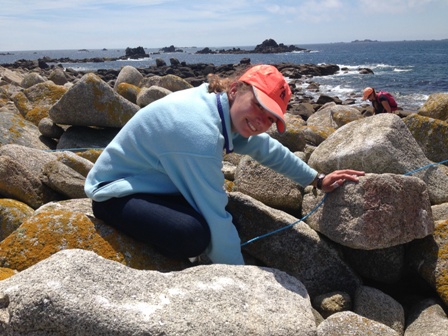
"Volunteering with IOSSRP for two weeks of my summer holiday from Southampton University where I am studying Environmental Science was an incredible and rewarding experience. I took part in shrew surveys using small mammal tunnels and ink recording, checked permanent rat monitoring stations on Gugh (no rats, phew!), conducted late night rabbit surveys and went out Storm Petrel surveying to St Agnes, Gugh and Annet.
By far the most rewarding experience was hearing Storm Petrels replying to tapes of their calls from beneath the rocks on the islands, only about 1 in 3 birds actually call back and every time it was so exciting to hear them!
I learnt so much over my stay on Scilly and have a new love and appreciation for seabirds. Working in the field and being part of the project has cemented my goals to work in conservation and protect species and their habitats." Lucia Watts, June 2015
---------------------------------------------------------------------------------------------------------------------
A View from an Autumn Volunteer and Ecologist
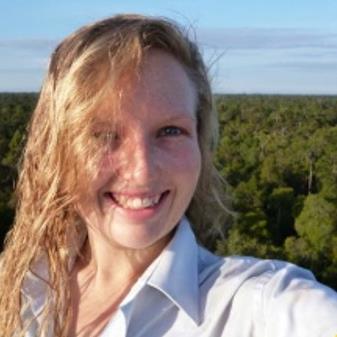
"The project is a fantastic, necessary initiative run by passionate and committed people, making St Agnes and Gugh safer for all the seabirds, other wildlife and the residents.
Jaclyn, Lydia, Holly and the team were welcoming an quickly showed me how the project's importance has led to it's success, gaining the respect and praise of the Scilly Isles' communities. No area would of stayed rat free (for almost 2 years now!) if it was not for the vital hard work, constant vigilance and generous funding from the partner organisations.
The islands are stunning and with such a mix of habitats, promise never to bore anyone who is interested in nature. Along with being a very important breeding location for sea birds and marine creatures, the Scilly's attract many off-course migrating birds from America or Siberia. These species in turn then attract a large population of professional and amateur birders, photographers and producers from all over the world - a community brought together by their love of birds.
I had the pleasure of spending my time with these people, and so learnt from them, alongside the research and monitoring that IoSSbRP showed me. The six days were well worth the journey - my next trip will be longer!
I look forward to volunteering for this and similar projects in the future - hopefully overlapping with the seabird breeding season on the Scillies!"
With many thanks and good luck! Thea Powell
Thea's twitter . Say hello to Thea: tpowell124@gmail.com
-------------------------------------------------------------------------
A View From a Funder
Dear Jaclyn and Paul, thank you for your time and efforts during the mission. It was great to have a chance to see the islands you are trying to take care of. Please find attached a picture of another species we saw from the Scillonina III ferry on the way back from the islands.
Laszlo Becsy, LIFE
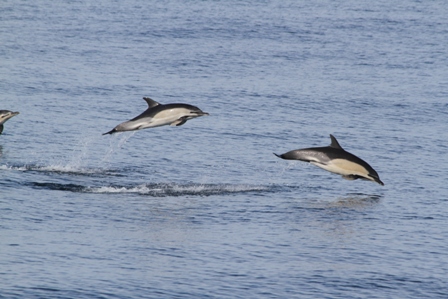
A View from Project Photographer
"I've been involved with the Seabird Recovery Project for the past year, it's been the most amazing year of my life! I have been fortunate enough to spend my time on the Isles of Scilly volunteering as Media Officer and natural history photographer for both the Isles of Scilly Wildlife Trust and the Seabird Recovery Project. Working with Jaclyn and the team here has been a fantastic experience, getting out to locations that would otherwise be inaccessible, and experiencing the conservation work first hand has been a pleasure to document.
 Thrift flowers all across the island of Annet. Making it a beautiful place to work alongside the Seabird Project.
Thrift flowers all across the island of Annet. Making it a beautiful place to work alongside the Seabird Project.
"Trying to pick out my highlights from my time here is proving difficult. Should it be my trip to the uninhabited island of Annet? Hearing manx shearwaters calling from their burrows? Seeing them feeding out at sea? Or even sharing my living space with the famous Scilly shrew? I could quite happily go on, but I think it should suffice to say that I have a plethora of wildlife moments that will be remembered for many years to come. I feel very honoured to simply be a part of the work. Ed Marshall".

- This manx shearwater offered great views of it feeding as it flew close to the Sapphire on one of their pelagic shark tagging trips.
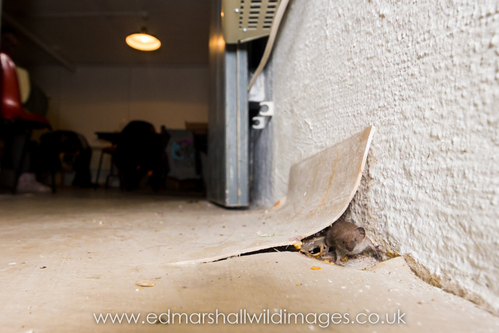
- Our resident Scilly Shrew, always great to see as he/she scurries their way around the edge of the living room.
Ed Marshall
--------------------------------------------------------------------------
A View from IOSWT Volunteers 2014/15.
Some of our new volunteers from the Isles of Scilly Wildlife Trust have undergone training, taken part in community work, and even started helping to assess the permanent monitoring stations on St Agnes and Gugh. Here is what some of them have to say about their experiences so far...
"I took part in checking the permanent monitoring stations on Gugh for signs of rats. It felt great to be a part of this important work and to see that there are still no signs of rats on Gugh." - Rebecca Etheridge
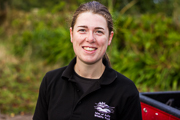
"It was great to see members of the community joining us on the beach clean on St Agnes and Gugh. We all had such fun and there was a great sense of achievement seeing the beaches free of rubbish." -Rhianna Pearce

“I began volunteering 3 days a week with the Seabird Recovery Project back in May and I’ve loved every second of it! From the late nights on Gugh with the first shearwater chicks to examining the contents of pitfall traps, my time on the project has been varied to say the least. If I had to pick one, I’d say my best moment so far has to be hearing Storm Petrels calling from underneath the boulders on Annet. It’s a moment I’ll never forget and I look forward to what the future brings for the project and these fantastic birds.” - Lydia Titterton

"It’s going to be extremely hard leaving the islands in September but my final year at University calls. I will go back a much wiser student and I’m sure I will be back on the islands sometime soon. Some of the other volunteers I’ve been working with are about the start a 12-month stint on the islands and I’m sure they’ll continue the great work, which I’ve had the pleasure of becoming involved with.
Long live the Seabird Recovery Project!" - James Woodin
-------------------------------------------------------------------------
A View From a Visiting Family Taking Part in the Fun of the Fetes.
"We learnt lots about the seabirds on the islands today. Three words to describe our experience today would be 'fun, interesting and friendly. It was fun for all the family." - Tim Cavalier and family
-----------------------------------------------------------------
A View From a St Agnes Volunteer
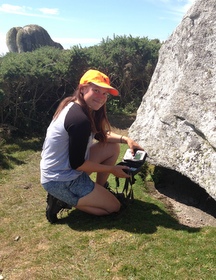
"Having volunteered with the Isles of Scilly Seabird Recovery Project the previous year and enjoying it so greatly it was hard to stay away once I had graduated. The small team are zealous, hardworking and committed which has ensured the success of the project thus far and makes volunteering with them a great experience. The breadth of the work I have been taking part in is wide and I have gained valuable experience and skills in many areas, as well as priceless memories. It is hard to describe how special and exciting it can be to prove the success of a project you have helped with and care about, and in this case in October this year it was hearing the calls of storm petrel chicks before they fledged from the bolder nest sites on St Agnes and Gugh. Going out on cold windy nights to try to hear and record evidence of these tiny fluff balls was very much worth it. We were able to record the first storm petrel chicks to survive on St Agnes and Gugh in living memory, a real achievement within just two years of removing the rats.
I particularly enjoyed my job of setting out camera traps in various locations around St.Agnes and Gugh in order to get footage and proof of both storm petrels nesting and Manx Shearwater chicks fledging. At times it was challenging to find active burrows with appropriate places to put a camera but it paid off and we managed to capture some great shots of the chicks and their behaviour. You can watch it at www.ios-seabirds.org.uk
Volunteers from so many different backgrounds help out with the project which makes the work all the more interesting and I’ve met some great people along the way. My experience with the project has truly been great and I would highly recommend it to anyone, from whatever background, volunteering with such a fantastic group of people doing such amazing and essential work.
Holly Paget-Brown
--------------------------------------------------------------------------
A View from New Zealand
"Lovely to meet you too and congratulations on the fine job you and your team are doing. What a great initiative, and how successful it has been in a very short time. I have been fortunate to work on the Omaha Shorebird Protection project and visit Tiritiri Matangi island which has revegetated and reintroduced many endangered species over 25 years and transformed the birdlife population not far from Auckland city. It was therefore great to spend a few days visiting the Isles of Scilly Seabird Recovery project, and give you a hand and wonderful to know that this project will help safeguard your seabirds." - Joanne McPhee
--------------------------------------------------------------------------
A View from a Returning Visitor
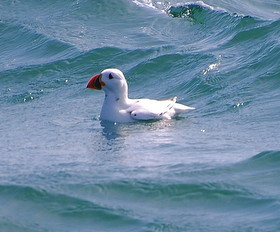 photo by Juliet Moore
photo by Juliet Moore
"My late husband and I have been coming to the Isles of Scilly for a number of years, and I am still visiting St Agnes every year with my youngest son and family. I have been out to the Bishop lighthouse before in 2009, and we had the treat of seeing this white puffin. We were onboard the ‘Spirit’ that Sunday afternoon and Juliet Moore kindly kindly sent us this wonderful photo.
This year we boarded the Spirit again on the Wednesday afternoon ‘seabird safari’ boat trip with Darren Mason. Please thank him for his knowledge and his talk that Wednesday afternoon trip. It was a real treat as I thought the boat trip was only going to Annet, but we went all the way out to the Bishop to see the seabirds as we did in 2009. I had my 5 year old grandson Luke with me on board but he who fell asleep before we reached the Bishop!
I have been a member of the RSPB at Thetford in Norfolk although I live in Bedfordshire, and continue to support the work of the RSPB including this project on the Isles of Scilly.
I hope you enjoy this photo and I hope to return to St Agnes next May 2015 to continue to learn about the important seabirds. Best wishes." - Chris Sherriff
--------------------------------------------------------------------------
A View from a RSPB Volunteer Taking Part in 'Date with Nature'.
"I always feel great excitement upon seeing the islands emerge from the expanse of sea when crossing on the Scillionian. They feel almost like another country and though having many of the same wildlife species, these species are often tamer and orangery in colour than their mainland cousins.
In June the RSPB ran ‘Date with nature’, aimed to help bring people closer to nature, by taking people on free short walks around Abbey pool on Tresco to look the wildlife, showing them that there’s more than meets the eye to the heathland and pools.The heathland was awash with the purples of bell heather and the yellows of tormentil and cat’s-ear (a wild hairy dandelion). Bumblebees hummed, working diligently to bring back pollen and nectar for their colony while a family of stonechats watched us from a distance, ‘chattering’ as the name suggests. Coming around to the pool saw flashes of blue from the blue tailed damselflies and coots hiding in the reeds. One walk saw a cormorant in the pool attempt to eat and eel, the eel wrapping itself around the bird beak in a bid to break free, while another walk saw hobbies chase after house martins.
It was great to see the interest and genuine enthusiasm that people had and want to know more about what they could spot. Someone spotted with great excitement a sparrow like bird with an orange head, though seeming like a new species, this is in fact pollen on the sparrow’s head from the New Zealand flax as it fed upon the nectar. Young and old, people who had been coming for year and those whose visit were the first time, there were many happy faces and thanks at the end of each walk. The sunny weather also helped, though much sun cream and water was required. For me the highlight was seeing the migrating Hummingbird-Hawk moth, a curious day flying moth with a fast wing beat and long proboscis, such an agile flier than it can fly sideways and backward.
‘Date with Nature’ will be back in September when there are many rare and interesting migrates passing through the islands." - Tamsin Page (pictured right)
--------------------------------------------------------------------------
A View From a Marine Biologist
Jamie Watts was leading a tour for cruise ship passengers visiting the islands, so came to chat to the project about the good work similar projects have done across the world. Jamie has seen first hand the effects that the removal of rats can have on seabird populations.
“I am a marine ecologist, expedition leader and naturalist guide working in earth’s most spectacular marine ecosystems. I write about marine and polar wildlife, global-scale ecology, human ecological footprint and climate change. I spent two years with British Antarctic Survey on South Georgia, and the project to remove rats out there is having immediate effect the recovery of species. I've raised several thousand dollars for albatross conservation charities, including Projeto Albatroz in Brazil and Bird Life's Albatross Taskforce. Well done to the Isles of Scilly Seabird Recovery project” - Jamie Watts
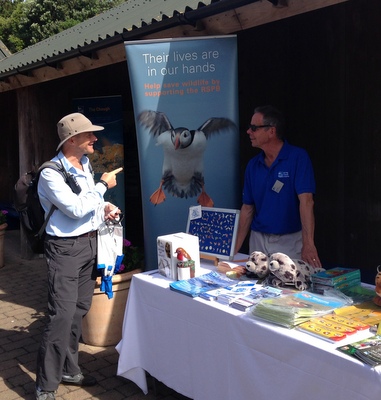
--------------------------------------------------------------------------
A View From Volunteer Lindsey
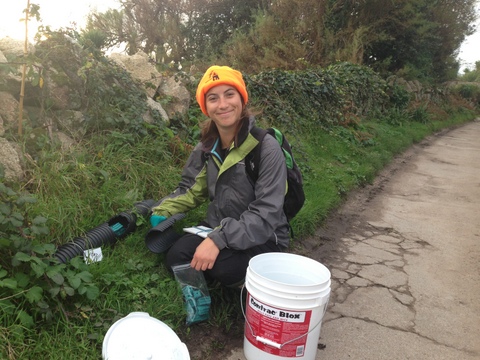
Lindsey Death - Seabird Task Force Volunteer November 2013 and volunteer in 2014
"I have learnt so much about island restoration and had a great time on the project. This is a wonderful project which will make a real difference to the islands’ seabirds. The team have been so great to work with, it is one of the best volunteering programmes I have ever been part of and I look forward to coming back to the islands in spring and to know I helped these amazing seabirds through practical conservation. I hope to stay in touch with the team and assist in other island restoration projects in the future. Thank you." - Lindsey Death
--------------------------------------------------------------------------
Views From Visitors to the Islands
"I first came to the Ises of Scilly in 1966 and have returned very year since, and most years in June. I can remember hearing the calls of Manx sheawater on the way back to my accommodation from the Turk's Head many years ago. It would be absolutely fantastic if these magical birds could once again prosper on the these islands along with storm petrel as well. Any increase in the seabirds on the islands has got to be a good thing. Good luck with the project." - Paul Dukes
"The eradication of rats on St Agnes and Gugh is a fascinating project and I look forward to seeing how the seabird populations prosper following the removal of the rats. Hopefully a successful outcome will also encourage investment in similar projects on other suitable islands in Britain." - Michael McKee
--------------------------------------------------------------------------
A View From a Photographer
James Sellen took this amazing photo of a feeding storm petrel this summer. The pose is almost 'angelic' - these dainty birds hold their wings above the body as they patter on the water surface when looking for food.

"I've visited the Isles of Scilly on many occasions - during the autumn migration period and more recently, during the summer months. I find the islands unique because they offer the opportunity to see a great variety of seabirds and marine life. This July, I saw a huge increase in numbers of resident (and possibly visiting) Manx shearwaters. In the past, I've seen small groups of these shearwaters during evening boat trips but this year I was lucky to see feeding groups in excess of 300 birds during the day! Being an aspiring wildlife photographer, this offered a fantastic photographic opportunity and I hope my wildlife photos encourage others to visit the islands. I think the ongoing conservation work being undertaken by the Isles of Scilly Seabird Recovery Project will have a very positive effect on the breeding success of these birds and will also help other resident species such as the storm petrel." - James Sellen
--------------------------------------------------------------------------
A view from an Isles of Scilly Willdife Trust Volunteer
"Thanks for giving my the opportunity to come and assist with the program whilst I was volunteering with the Isles of Scilly Wildlife Trust. It was a fantastic experience - suitable for enthusiasts, students or professionals alike. It is a great project set in the breathtaking scenery of the Scillies - highly recommended. Thanks for your time." - Ed Anderson
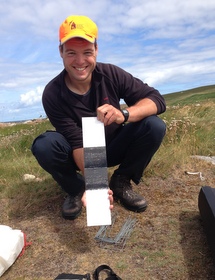
--------------------------------------------------------------------------
A View from a Story Teller
Jon Cleave is the creator of children’s story book character Gully. Jon Cleave, lives in the heart of the lovely old Cornish fishing village of Port Isaac. Jon is an experienced singer and storyteller and his fun and exciting story sessions inspire children's imagination and creativity in writing, illustration and song. Jon visited St Agnes as part of the ‘The Isles of Scilly Light Festival 2014’ and was delighted by the children’s knowledge of seabirds on the island.
“Children often know about gulls and puffins, and yesterday it was fascinating to hear from the children about the Manx shearwaters and storm petrels which live on the islands and which the children are protecting. The knowledge and passion the children have for the seabirds is incredible.” - Jon Cleave
John kindly donated his Gully books and audio CD to St Agnes school so they can continue to learn about the adventures of ‘Gully’ at Port Isaac as they learn about the seabirds on the Isle of Scilly through the project.
--------------------------------------------------------------------------
A view from a sabbatical RSPB member of staff
"I am so pleased that I had the opportunity to take some time to volunteer with the Project. My normal job is in the Finance department at RSPB and this role took me out from behind a desk and put me in the frontline. I’ve learned a tremendous amount about the challenges of living and working on an island, of delivering conservation in harmony with a local community, and about the life of a conservation volunteer. It was an amazing experience – thank you!"
--------------------------------------------------------------------------
A view from the South Pacific
"We are incredibly supportive of the project and have taken boat trips out to see the Manx shearwaters. We have witnessed the benefits to seabirds through island restoration projects on Ducie, a 70ha island in the Pitcairn Islands of the South Pacific. There were petrels nesting everywhere. It was truly marvellous. The thought of how vulnerable these birds are when rats are accidentally introduced really struck a chord with us. Now we know about the vital work in Scilly, we will certainly be back in a couple of years. We were privileged to see the birds on Ducie and have felt the same taking a shearwater trip around Annet. Good luck with the project!" - Val and Geoff Webster - visitors to Scilly in 2013
--------------------------------------------------------------------------
A view from Matthew - sabbatical experience recommended!
"Stepping onto the quay at St Agnes in Late October, I quickly realised that an appreciation of the beauty of the islands would have to be postponed, as Biz whisked me off to assist with bait station installation on Gugh. An enjoyably busy ensuing fortnight seemed to flash past in no time at all, as the team prepared the way for commencement of baiting. I don’t think it was luck that I was able to join up with such a wonderfully committed group of people coming together for such a worthwhile cause; the project leaders, with all their accumulated experience, were very professional in their approach, blending impeccably with the team of volunteers to fashion a well-oiled machine that it was a pleasure to be a part of! Oh, and the Islands are lovely of course, as I soon found out! Thinking of volunteering? – Well I’d certainly recommend it!" - Matt Tickner visiting in November 2013
--------------------------------------------------------------------------
A view from admin volunteer!

" I have proof read documents, taken minutes, typed and visited the island of St Agnes to meet with other volunteers, those volunteers are far more hardy than me - they are out in all weathers.. The level of commitment is astounding and each person I spoke to was unanimous that it was wonderful working in such a beautiful place and for such a good cause. The Seabird Recovery Project will enhance the seabird life and other species that are being kept down by the predatory brown rat.
Carole Cilia, Community Heritage Volunteer (Office work) January 2014
--------------------------------------------------------------------------
A View from a 'Seabird Task Force Volunteer' 2013
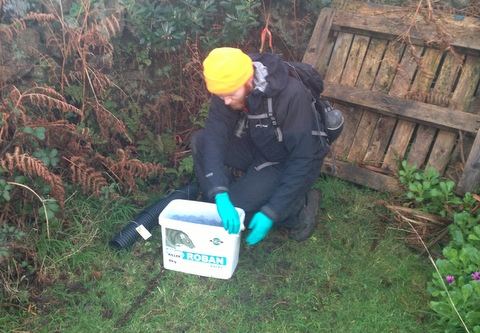
"Volunteering for IOSSRP has been a brilliant experience so far. It is a pleasure to work with such an enthusiastic, knowledgeable and experienced team of people. St Agnes and Gugh are beautiful islands, and to be able to play a part in allowing the seabirds to recover, unhindered by predation from rats is something I am pleased to be able to assist with. We have done a lot of walking in all weathers, but the sunny days more than make up for the rain!" - Alaststair Wilson
--------------------------------------------------------------------------




